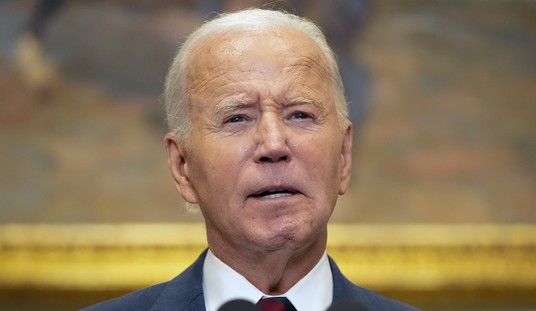In 2009, something called the Oregon Youth Sexual Health Partnership was formed. The stated goal of the partnership was to develop the Youth Sexual Health (YSH) plan to address teen pregnancy prevention in a more holistic manner — shifting youth sexual health from a risk-focused paradigm to a youth-development model of sexual health and well-being.
So how is it that this partnership has produced the “Rational Inquirer,” a guide to every sex question you can imagine (and many you can’t) written by children, for children?
The table of contents of the “Rational Inquirer” includes such items as:
Exploring the safer sex buffet………………………………………………………………………..2A fairy-tale first time…………………………………………………………………………………….4Masturbation at a glance……………………………………………………………………………..10Plan ahead: Prevent unintended pregnancy…………………………………………………..12
I claim the right to choose my ultimate gender………………………………………………15Have you ever…………………………………………………………………………………………….20What’s it like to grow up in an open adoption?………………………………………………34
John, 17, is a Sex, Etc. staff writer. John’sarticles were reprinted with permission from Sex,Etc., a teen-written, sexual health magazine andwebsite published by Answer.Megan is a junior at North Eugene High School. She loves music,plays the flute and has been involved in two honor bandprograms — one of her biggest passions. Megan likesto write and read in her spare time. She has beenon the honor roll during most of high school andloves learning. — also loves Mexico’s culture,language and freedom.Andrew, 18, is a Sex, Etc. staff writer. Andrew’s articlewas reprinted with permission from Sex, Etc., ateen-written, sexual health magazine and websitepublished by Answer.
James, 17, of New Jersey, enjoyed his first time. “Ididn’t want my first time to be purely physical. WhenI found the right girl, we talked about it for the weekleading up. My parents were out of town for thenight, and I picked up a few condoms earlier that day.It only lasted four minutes, but I’ve never felt moreconnected to a person. No regrets whatsoever.”Eighteen-year-old Blythe of New Jersey shares whather first time was like.“I waited to have sex until I was ready and madesure my girlfriend was also ready and consenting.We loved each other at the time, so it was a veryaverage experience, felt amazing. It wasn’t too quickor awkward at all. I think once you know you’reready, you don’t have to rush into anything.”
Oregon has a long history of attempting to address the problem of teen pregnancy. From the 1980s through around 2005, a series of abstinence-only sex ed programs were funded using federal grants. The mission statement of the “Rational Inquirer” from 1996 reflects this:
- Provide a continuum of services
that ranges from school- and community-based pregnancy prevention programs for teens who are not sexually active, to pregnancy prevention and and parenting education/support for teens already pregnant or parenting.
- Give a clear and consistent message
from parents, schools, the media, and the community about the importance of responsible behaviors once sexual activity begins.
- Provide all adolescents with comprehensive sexuality education
that teaches them communication skills to postpone sex until they are ready, and that provides them with information about reproductive health and contraception when needed.
- Make contraceptives more accessible to teenagers.
- Integrate reproductive health care into general health care services.
- Prevent child physical and sexual abuse and neglect.
Quite an evolution from that to “I identify as a male-to-female (or male-to-feminine androgynous) transgender or genderqueer person in a male body.” (p. 15, 2016 edition)
The Oregon Health Authority has tracked the results of the Youth Sexual Health Plan for the time period 2008-2014. Of course, in between all their social justice goals (e.g. “Collaborate with stakeholders to eliminate systemic social inequities related to employment, housing opportunities, education and poverty that intersect with youth sexual health” and “Increase the support for funding opportunities to conduct culturally-sensitive research and evaluation focused on identifying and addressing the needs and assets of diverse populations”) they tout their program as an enormous success. In that time period, teen pregnancy rates have fallen by 33 percent, which they cite as proof.
However, as all good and most mediocre statisticians know, correlation is not causation. They speculate that increased use of implanted hormonal birth control devices is one cause, but they cannot back it up with proof. As I wrote here, many studies are starting to demonstrate that teen pregnancy rates fall as a result of decreased spending on public sex education and contraceptives. The Oregon Health Authority even tucks away a little fact at the end of their assessment report that undermines their own bragging:
In 2010 alone, Oregon taxpayers saved $110 million dollars from the steep decline in both teenpregnancy and birth rates, which have been trending downward since 1990. Any decline inteen pregnancy and birth rates reduces the taxpayer cost to fund public assistance programs thatprovide medical care and other child welfare services. Declines in teen pregnancy can also offsetlost tax revenue and decreased spending power caused when childrearing prevents teen parentsfrom joining the workforce. [Emphasis added]










Join the conversation as a VIP Member